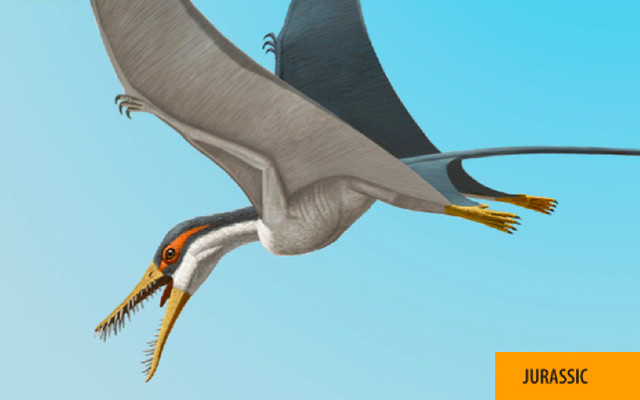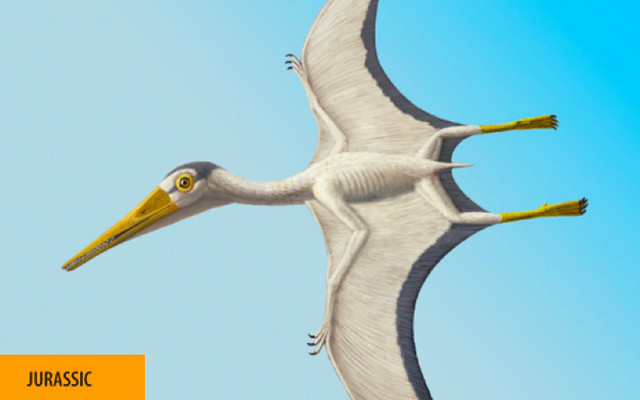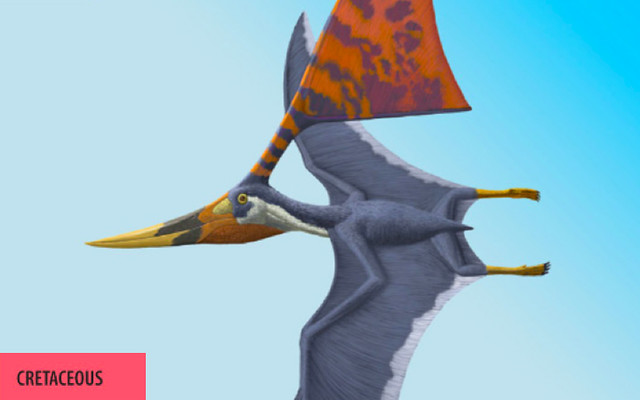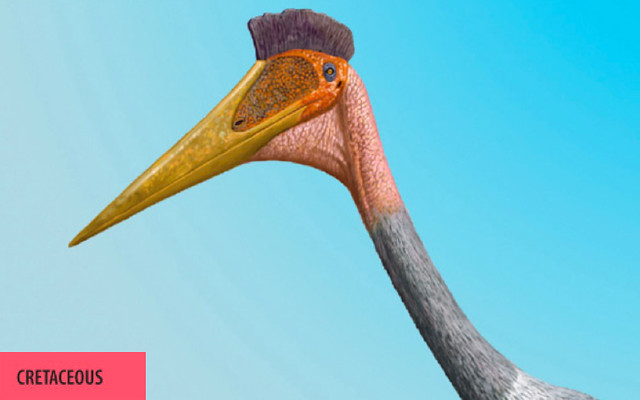Cards
(QUICK LINKS: Decks | plants | mammals | birds | | reptiles | fish | cephalopoda | insects | microbe | events
( scientist | project | modifier | technique |)

Rhamphorhynchus muensteri
Rhamphorhynchus muensteri


EXTINCT | 4 POINTS
Play: FLIGHT of 1.
Rhamphorhynchus means “beak snout.” This pterosaur has been found in Germany. It had a very long tail, and its long needle-like teeth helped it catch fish over open water.

Pterodactylus antiquus
Pterodactylus antiquus


EXTINCT | 4 POINTS
Play: FLIGHT of 1.
These were the first pterosaurs ever to be identified, found in 1784 by the German scientist Cosimo Alessandro Collini for the wonder cabinet he curated.

Nyctosaurus gracilis
Nyctosaurus gracilis


EXTINCT | 4 POINTS
Play: FLIGHT of 1.
Nyctosaurus means “night lizard.” It has been found in the Niobrara Formation of the mid-western United States. Nyctosaurus possessed an extraordinarily large antler like crest, which is surprising given how small the pterosaur was.

Tapejara wellnhoferi
Tapejara wellnhoferi


EXTINCT | 4 POINTS
Play: FLIGHT of 1.
Tapejara means “old being” and has been found in Northeast Brazil. The tip of its lower jaw is turned downward. It may have been a fruit eater, or skimmed the surface of the ocean for fish.

Quetzalcoatlus northropi
Quetzalcoatlus northropi


EXTINCT | 7 POINTS
Play: FLIGHT of 3.
Named after both the Aztec air god Quetzalcoatl and the Northrop Corporation, this Texan pterosaur had a wingspan of roughly 33 feet (the size of a 2 person airplane) and a height of 16-18 feet!

Dimorphodon macronyx
Dimorphodon macronyx


EXTINCT | 5 POINTS
Play: FLIGHT of 2.
Dimorphodon macronyx was discovered near Lyme Regis, England, on what is now called the Jurassic Coast. Dimorphodon means “two-form tooth,” which refers to its two distinct types of teeth. Macronyx refers to its large claws.